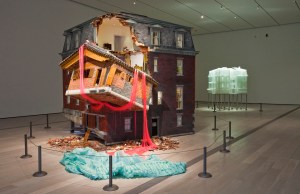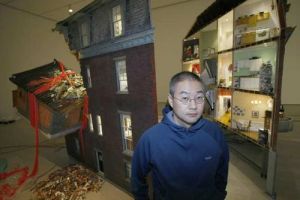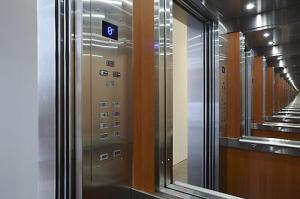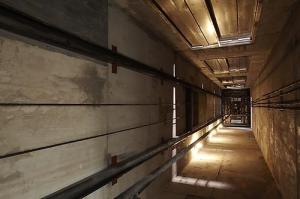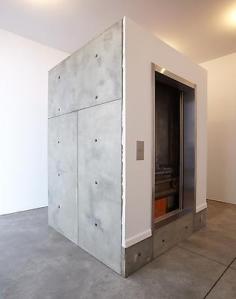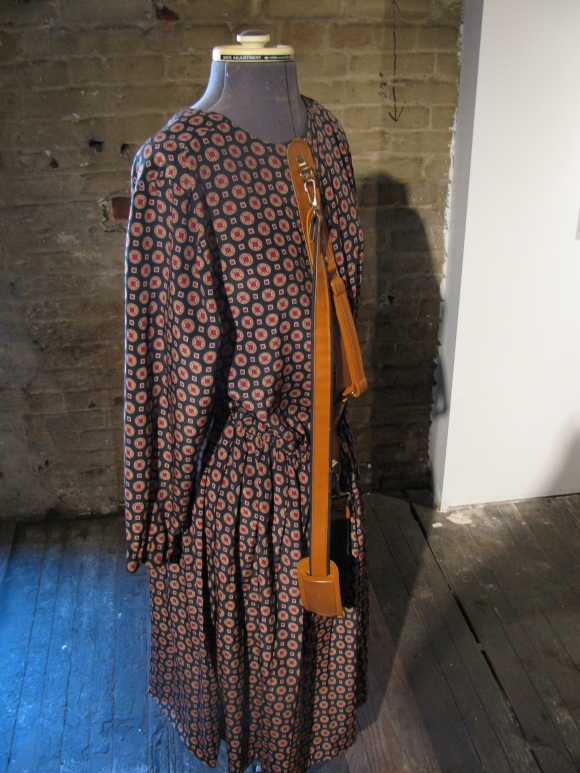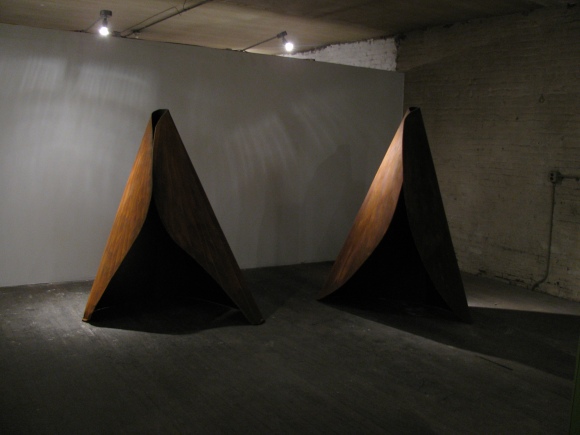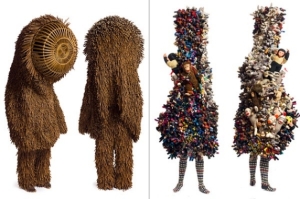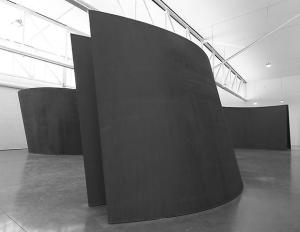This Thursday night was a dot filled evening given the fanfare surrounding the Damien Hirst openings at the Chelsea Gagosian Galleries. The exhibition spaces on 21st and 24th streets were packed with people. Rather than a retrospective of unexpected works, the abundance of dot paintings underscores the corporate attitude of this Hirst series. Rather than a groundbreaking conceptual show, the simultaneous exhibitions prove to be an art marketing coupe (which seems to be Hirst and Gagosians’ objective.) I can’t help but have a soft spot for the mini dot paintings in the 21st street gallery.
The most innovative art I found of Thursday night is in the main room of Eyebeam Art+Technology Center. Lumarca is an interactive combination of a video game and a light installation. The viewer stands in a cube taped on to the floor and follows instructions given by a chandelier-like installation of electric light tubing. The electric tubes form a cube shape that mimics the space where the person interacting with the installation stands. The computer senses the movement of the person. The outline of the person is reflected in the tubing structure and stylistically alludes to early video games or anime characters. The tubes light up designating the hands, feet, and head of the player.
The participant is then expected to move their body to capture lit up parts of the electrical tube matrix. Acting like video games projected with a green screen, Lumarca produces a similar effect and even provides people with final scores. Apart from the general interactivity of the installation, the electrical lighting is especially aesthetically pleasing. The person playing with the installation is illuminated, flooding the small square with light which contracts the expansive dark room that houses Lumarca. This makes the player appear majestic and like the person is literally fighting the machine. Lumarca proves to be a mesmerizing installation, drawing a large crowd and illiciting cheers from the crowd when the installation issued a high score.
The unique installation is a collaboration between Albert Hwang and Eyebeam Resident Matt Parker and is on display until February 14th at Eyebeam Art+Technology Center.
Here is a video of Lumarca at SIGGRAPH Asia 2009:








